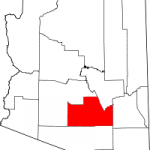 FLORENCE AZ (December 16, 2011) – Sixteen months ago, a group of Pinal County Arizona citizens was appointed by the County Board of Supervisors to envision a “sustainable” future. In December 2011, the citizens committee presented its findings to the Supervisors.
FLORENCE AZ (December 16, 2011) – Sixteen months ago, a group of Pinal County Arizona citizens was appointed by the County Board of Supervisors to envision a “sustainable” future. In December 2011, the citizens committee presented its findings to the Supervisors.
“Sustainability means different things to different people,” said Pinal County District 3 Supervisor David Snider. “The Board was judicious when it gave the committee four specific areas of focus. This was a very intelligent group of residents who stayed on track throughout their timeframe.”
The four areas of focus given to the group included:
¨ Energy Conservation: New Homes, Commercial/Office/Industrial, LEED, and other standards
¨ Approval Process for Green Electricity Production
¨ Water Conservation: New Homes and Commercial/Office/Industrial
¨ Heat Island Mitigation through Reduced Parking Lot Sizes
Each area included a list of recommendations for the Pinal County Supervisors to potentially adopt, grouped by “immediate” and “next step.”
“While the committee was looking at recommendations that could be quickly implemented,” said sustainability committee facilitator Kent Taylor, “they also thought very hard about the steps that would be long term. They wanted these changes to last for years down the road.”
In the energy conservation portion of the report, the sustainability committee recommended an immediate measure of having new homes meet the Energy Star rating, as well as having existing plats meet that standard as well.
Pinal County District 2 Vice Chairman Bryan Martyn was impressed with the group’s effort. As the Board moves forward with potential decisions related to sustainability, serious consideration will be given to the report’s recommendations.
“Are we going to encourage or make them requirements for new construction?” Pinal Board of Supervisors Vice Chairman Martyn said. “People are going to want to know if there will be a reasonable return on investment. There will be some serious questions that will have to be brought up.”
When the citizens committee looked at immediate recommendations with regard to green electricity production, the focus turned to Pinal County’s Comprehensive Plan. One specific committee recommendation is to allow green energy production applications to be submitted as a non-major Comprehensive Plan amendment to speed the permitting process. The committee also thought that the development of a Pinal County Renewable Energy Overlay Zone would allow energy production throughout an entire area.
“Technology is changing so fast,” Taylor said. “We see solar and wind generation as green energy alternatives today. But what is it going to be in the future? Could we see algae power? Who knows what it is going to be?”
In the desert southwest, water conservation is a topic on nearly everyone’s mind. Water is the key commodity that must be present for development to occur and Pinal county is keenly aware of the limitations of the groundwater supply. The Pinal citizens committee had several recommendations to the Board of Supervisors regarding how best to implement water savings throughout the county. Water reclamation, water harvesting, and use of gray water were included in the sustainability committee’s recommendations.
Pinal County’s growth could bring about a phenomenon called the “urban heat island effect.” According to the Environmental Protection Agency, an urban heat island is an area whose temperature is greater than surrounding rural areas. The sustainability committee concluded that more vegetation in parking zones, along with cool coating the pavement and roofs in buildings, would help stop an urban heat island from forming.
Following its presentation to the Board of Supervisors, the work of the citizens sustainability committee was acknowledged with comments that many recommendations should be implemented.
“For a volunteer group, spending sixteen months together gathering data and coming up with green ideas is not an easy task,” Pinal County Chairman Pete Rios said. “These ideas would have to come before the public in a hearing to get the ball rolling, but I think there are those who would like to see these ideas implemented while we still have time to have them become effective.”
The members of the citizens sustainability committee were; Pinal County District 1 citizens Betty Peterson, Dr. Linda Leigh, and J. Peter Armenta; Pinal County District 2 citizens Fernanda Falbo, Dr. Liz Martin, and Mike Schaffer; and District 3 citizens Bill Collings, Gina D’Abella, and Dr. Caroline Lobo.
Article written and submitted to the Sedona Eye by Pinal County reporters Joe Pyritz and Heather Morgan.

For the best in Sedona news and views, read SedonaEye.com daily! Reach 3000+ subscribers with your ads and articles!

